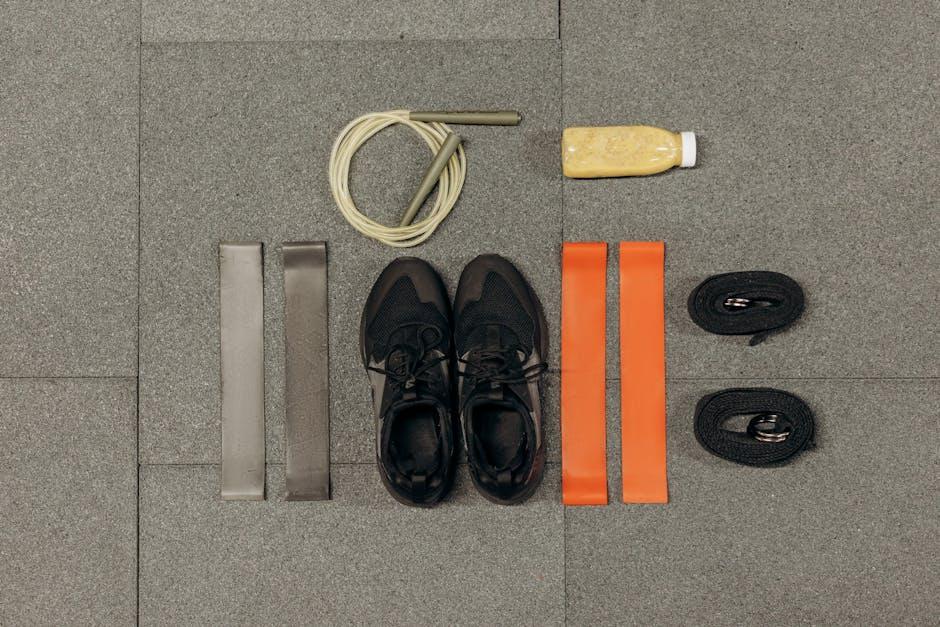In the bustling world of fitness, where trends ebb and flow like the tide, older adults often find themselves at a crossroads: should they lace up their sneakers for a heart-pumping cardio session, or should they reach for the weights to build strength and resilience? As the golden years unfold, the importance of maintaining an active lifestyle becomes ever more apparent, yet the path to optimal health is not always clear. In this article, we delve into the age-old debate of cardio versus strength training for older adults, exploring the benefits, challenges, and considerations that can help guide this pivotal decision. Whether you’re a seasoned gym-goer or a fitness novice, join us as we navigate the landscape of exercise choices that promise to enhance both longevity and quality of life.
Balancing Heart Health and Muscle Mass in Later Years
As we age, maintaining both cardiovascular health and muscle mass becomes increasingly crucial. Cardio exercises like walking, swimming, or cycling can enhance heart health, boost mood, and improve overall endurance. On the other hand, strength training helps preserve muscle mass, enhances balance, and supports bone health, which is vital in preventing falls and fractures. For older adults, striking a balance between these two forms of exercise is essential.
Consider incorporating a mix of activities into your weekly routine to reap the benefits of both. Here’s a simple approach:
- Cardiovascular Activities: Aim for moderate-intensity exercises like brisk walking or swimming for at least 150 minutes a week.
- Strength Training: Engage in resistance exercises such as light weightlifting or bodyweight workouts at least twice a week.
- Flexibility and Balance: Include yoga or tai chi sessions to improve flexibility and balance, supporting overall well-being.
By weaving these elements together, older adults can enjoy a holistic approach to fitness that nurtures both the heart and muscles, fostering a healthier, more active lifestyle.
Exploring the Benefits of Cardiovascular Workouts for Seniors
For seniors, engaging in cardiovascular exercises offers a multitude of health advantages that can significantly enhance quality of life. These workouts are particularly effective in improving heart health by increasing blood circulation and reducing blood pressure, which in turn helps in lowering the risk of heart disease. Furthermore, cardio exercises are known to boost lung capacity, making everyday activities easier and less tiring. For those concerned with weight management, cardiovascular workouts can also aid in maintaining a healthy weight, which is crucial for joint health and overall mobility.
- Improved Heart Health: Reduces the risk of cardiovascular diseases.
- Increased Lung Capacity: Enhances breathing and stamina.
- Weight Management: Supports maintaining a healthy body weight.
- Mental Well-being: Elevates mood and reduces symptoms of anxiety and depression.
Moreover, these exercises have been shown to enhance mental well-being by releasing endorphins, often referred to as “feel-good” hormones, which can alleviate symptoms of anxiety and depression. This emotional uplift is essential as it contributes to an overall sense of well-being and positivity. Therefore, incorporating cardiovascular workouts into a senior’s fitness regimen can be a pivotal step towards achieving a healthier, more active lifestyle.

The Role of Strength Training in Aging Gracefully
As the years go by, the importance of maintaining muscle mass becomes increasingly evident. Strength training plays a pivotal role in preserving the vitality and independence of older adults. By engaging in regular resistance exercises, individuals can combat the natural decline in muscle mass and bone density that accompanies aging. This not only enhances physical strength but also improves balance and coordination, reducing the risk of falls.
- Increased Metabolism: Building muscle helps boost metabolism, which can aid in weight management.
- Improved Bone Health: Resistance exercises stimulate bone growth and increase bone density.
- Enhanced Mental Well-being: Physical activity releases endorphins, which can alleviate symptoms of depression and anxiety.
Incorporating strength training into the fitness routine of older adults is not merely about lifting weights. It can include a variety of activities such as yoga, Pilates, or even bodyweight exercises. The goal is to foster a holistic approach to health, ensuring that the journey of aging is not just about longevity, but about living a life filled with energy and zest.

Crafting a Personalized Fitness Plan for Older Adults
When tailoring a fitness plan for older adults, it’s essential to strike a balance between cardiovascular and strength training exercises. Both types of exercises offer unique benefits, and the key is to integrate them in a way that complements the individual’s lifestyle, health status, and fitness goals.
Cardiovascular exercises are vital for maintaining heart health, improving endurance, and enhancing overall energy levels. Activities such as walking, swimming, or cycling can be excellent choices. These exercises are low-impact and can be easily adjusted to suit different fitness levels. Benefits include:
- Improved cardiovascular health
- Enhanced mood and mental well-being
- Better regulation of blood pressure and cholesterol levels
Strength training, on the other hand, focuses on building muscle mass and bone density, which are crucial for maintaining independence and reducing the risk of falls. Incorporating exercises like resistance band workouts, bodyweight exercises, or light weightlifting can make a significant difference. Advantages include:
- Increased muscle strength and mass
- Better balance and coordination
- Prevention of age-related muscle loss
Ultimately, the ideal fitness plan for older adults should weave together elements of both cardio and strength training, ensuring a comprehensive approach to health and wellness. By doing so, older adults can enjoy a more active, fulfilling lifestyle, paving the way for a healthier future.
Wrapping Up
In the grand tapestry of life, where each thread weaves a story of resilience and vitality, the question of whether older adults should focus on cardio or strength training remains a nuanced dialogue. As the sun sets on this exploration, it becomes evident that the journey toward health and well-being is not a one-size-fits-all path. Both cardio and strength training offer unique benefits, enhancing the symphony of heartbeats and the resilience of muscles, echoing the rhythm of an active life.
Ultimately, the choice between the two is not a binary decision but rather a personal symphony, harmonizing with individual needs, goals, and medical guidance. As we close this chapter, let us embrace the wisdom that comes with age, honoring our bodies with movement that uplifts and empowers. Whether it’s the exhilarating cadence of a brisk walk or the empowering heft of a dumbbell, the key lies in finding joy in the journey and strength in every step. Here’s to a future where every heartbeat is strong, every movement purposeful, and every day a testament to the vibrant dance of life.

